|
|
|
Sort Order |
|
|
|
Items / Page
|
|
|
|
|
|
|
| Srl | Item |
| 1 |
ID:
137506


|
|
|
|
|
| Summary/Abstract |
Of the various television documentaries dealing with British military operations in Helmand Province, among the most successful have been those fronted by TV actor Ross Kemp. This article examines the development, airing and reception of the first of these, Ross Kemp in Afghanistan. The aims of the filmmakers and the needs of the Ministry of Defence and British Army are examined, along with Kemp’s time as an embedded reporter with 1 Royal Anglians in 2007, and the responses of critics, soldiers and the viewing public to resulting the series, in an effort to discern why it worked for all concerned.
|
|
|
|
|
|
|
|
|
|
|
|
|
|
|
|
| 2 |
ID:
160504
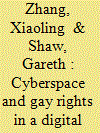

|
|
|
|
|
| Summary/Abstract |
Owing to China’s austere censorship regulations on film media, directors of films and documentaries engaging with lesbian, gay, bisexual and transgender themes have struggled to bring their work to domestic attention. Working outside of the state-funded Chinese film industry has become necessary for these directors to commit their narratives to film, but without approval of China’s State Administration of Press, Publication, Radio, Film and Television, these artists have had little chance of achieving widespread domestic distribution of their work. However, advancements in new media technology and Web 2.0, ranging from digital video formats to Internet-based distribution via social media networks and video-hosting platforms, provide opportunities for Chinese audiences to access films and documentaries dealing with LGBT themes. This empirical study assesses how production, promotion and consumption of queer documentary films are influenced by the development of social media within Chinese cyberspace. Through close readings of microblogs from SinaWeibo, this study combines analysis of contemporary research with digital social rights activism to illustrate contemporary discourse regarding film-based LGBT representation in China. Finally, the study comments on the role that documentary filmmaking plays in China’s gay rights movement, and discusses the rewards (and challenges) associated with increased levels of visibility within society.
|
|
|
|
|
|
|
|
|
|
|
|
|
|
|
|
| 3 |
ID:
148025
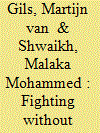

|
|
|
|
|
| Summary/Abstract |
Film production has for a long time been a prominent medium for Palestinians to resist Israeli occupation and create a cultural memory. Though there are some academic studies on the subject, a critical framework of analysis for such films remains underdeveloped. This article argues that Palestinian film production has surged particularly in recent years as part of an increasingly globalised dimension to Palestinian resistance, alongside such initiatives as the Electronic Intifada and the BDS movement. Early Zionist rhetoric asserted the non-existence (or invisibility) of Palestinians. Several decades later, when the Arab revolt was shut down, the Israeli official propaganda largely shifted to a discourse of “emergency”, which decontextualizes the anti-colonial nature of Palestinian resistance. The films 5 Broken Cameras (2011) and Private (2004) both engage with Israeli colonialism and the state of emergency by acting as tools of witnessing, laying bare the occupational strategies the Israelis use under emergency law and revealing the arbitrary nature of such practices as the Separation Wall. The films challenge Israeli authority through their depictions of predominantly non-violent forms of resistance, which counters their historically constructed invisibility as a people, as well as the colonialist narrative of “terrorism”. Non-violent resistance makes the recognition of Israeli authority problematic, as the settlers cannot use brute force to drive out the Palestinians if there is no documented incident in context to justify violence. Furthermore, the article argues that the form of the films – pseudo-documentary and especially “talking witness” documentary – enables their emotive content to reach out to an international audience, which could potentially respond. Thus, the films not only contain acts of resistance, but they significantly are tools of resistance in the conflict.
|
|
|
|
|
|
|
|
|
|
|
|
|
|
|
|
| 4 |
ID:
178332
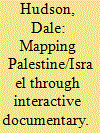

|
|
|
|
|
| Summary/Abstract |
Available on publicly accessible websites, interactive documentaries are typically free to use, allowing audiences to navigate through amounts of information too large for standard film or television documentaries. Media literacy, however, is needed to understand the ways that interactive documentaries reveal or conceal their power to narrate. Examining ARTE France’s Gaza Sderot (2008–9), Zochrot’s iNakba (2014), and Dorit Naaman’s Jerusalem, We Are Here (2016), this article discusses documentaries that prompt audiences to reflect upon asymmetries in the power to forget history and the responsibility to remember it by mapping Palestinian geographies that have been rendered invisible. Since media ecologies are increasingly militarized, particularly in Palestine/Israel, interactive documentaries like iNakba and Jerusalem, We Are Here can disrupt Israeli state branding as technologically innovative while minimizing risk of surveillance by avoiding the use of location-aware technologies that transform interaction into tracking.
|
|
|
|
|
|
|
|
|
|
|
|
|
|
|
|
| 5 |
ID:
161623
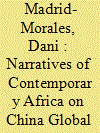

|
|
|
|
|
| Summary/Abstract |
This paper examines the documentary series Faces of Africa, broadcast on CGTN Africa, the African branch of China Global Television Network (CGTN, formerly known as CCTV International) since 2012. Using in-depth interviews and content analysis, we canvas the layers of supervision, censorship, agency and cross-cultural collaboration that lead to a creative dialogue between filmmakers and Chinese commissioning producers. We argue that, compared to news programs on both CGTN and other global networks, the documentary series allows a more positive and humane portrayal of African people. However, given that CGTN often engages non-Chinese filmmakers and seeks to emulate global production values to attract non-Chinese viewers, the extent to which CGTN’s documentaries on Africa contrast to those of other global networks remains a question for further debate.
|
|
|
|
|
|
|
|
|
|
|
|
|
|
|
|
| 6 |
ID:
136292
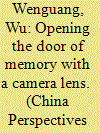

|
|
|
|
|
| Summary/Abstract |
For a revolution over “culture,” remarkably little has been said about the Cultural Revolution culture itself, and even less about the apolitical, private art produced underground. This article explores this apolitical, private art, arguing that it was a “rebellion of the heart” against the state’s ruthless destruction of the private sphere. Mao’s Party-state drastically fragmented families, moulding socialist subjects through “revolution deep down into the soul.” Paintings of (broken) homes and interiors, flowers, and moonlight articulate lived experiences of the revolution while silently reinventing a private refuge for the body and soul to subsist beyond state control. Defying orthodox revolutionary mass culture, this apolitical art articulated private experience and created a private inner world for a new form of modern subjectivity, while generating community and human solidarity against relentless class struggle and alienation.
|
|
|
|
|
|
|
|
|
|
|
|
|
|
|
|
| 7 |
ID:
136290
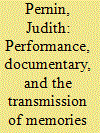

|
|
|
|
|
| Summary/Abstract |
Independent documentary film projects dealing with history have recently multiplied in China. While all seek to shed new light on personal experiences of the Mao era, they vary greatly in form, method, and scale. Launched in 2010 by Wu Wenguang at the Caochangdi Workstation, a space devoted to contemporary dance and documentary film, the Folk Memory Project aims at producing various textual and visual records of the historical experience of rural populations, especially during the Great Leap famine. Of special interest are the 20 documentaries of the Folk Memory Project’s film section – a body of works constantly growing following yearly returns by filmmakers to their “home” villages. These films are characterised by a performative aspect that is rare in other Chinese documentaries on similar topics. This contribution examines this body of documentaries and the role of performance and performativity in the recording of collective memory of the famine.
|
|
|
|
|
|
|
|
|
|
|
|
|
|
|
|
| 8 |
ID:
192657
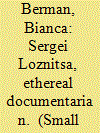

|
|
|
|
|
| Summary/Abstract |
On 24 February 2022, Russia launched a full-scale invasion of Ukraine in a major escalation of a war that had been persisting since 2014. This article explores three of Sergei Loznitsa’s films set in Ukraine and examines the way in which their shared observational style informs the Russia-Ukraine war and may influence viewers’ perceptions of the complexities of the conflict. A close analysis reveals that the observational mode used in Maidan (2014), Donbass (2018), and The Kiev Trial (2022) has two primary effects. First, in Donbass and The Kiev Trial, the unfiltered style serves as a contrast to the often farcical and ‘staged’ content, thereby exposing the lies underpinning Soviet presence in Ukraine and the current Russian invasion. Second, in addition to exposing Russian misinformation, Loznitsa’s observational style in Maidan and Donbass facilitates identification with the Ukrainian people by visually and auditorily immersing the viewer in the world on the screen. The article concludes with a discussion of the significance of Loznitsa’s work in shaping the public’s perception of – and continued commitment to – the war in Ukraine.
|
|
|
|
|
|
|
|
|
|
|
|
|
|
|
|
| 9 |
ID:
086847
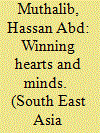

|
|
|
|
|
| Publication |
2009.
|
| Summary/Abstract |
A comparison of Malay films produced in the 1950s in the Chinese-owned, Singapore-based Malay film industry with those produced in the Kuala Lumpur-based, government-supported Malayan Film Unit (MFU) exposes many similarities in how Malays were represented on film in the lead-up to Malayan independence in 1957. While the social realist films produced in Singapore urged ordinary Malays to accept changes that were occurring in society and the films produced by the MFU reinforced government propaganda and helped develop new heroes for the nation, both traditions portrayed Malays as being very comfortable and prosperous in an idyllic rural environment.
|
|
|
|
|
|
|
|
|
|
|
|
|
|
|
|
|
|
|
|
|